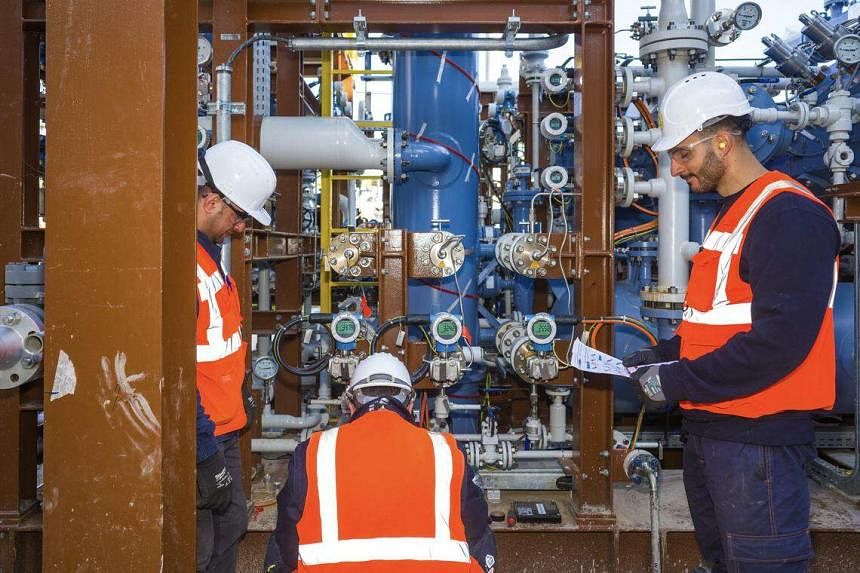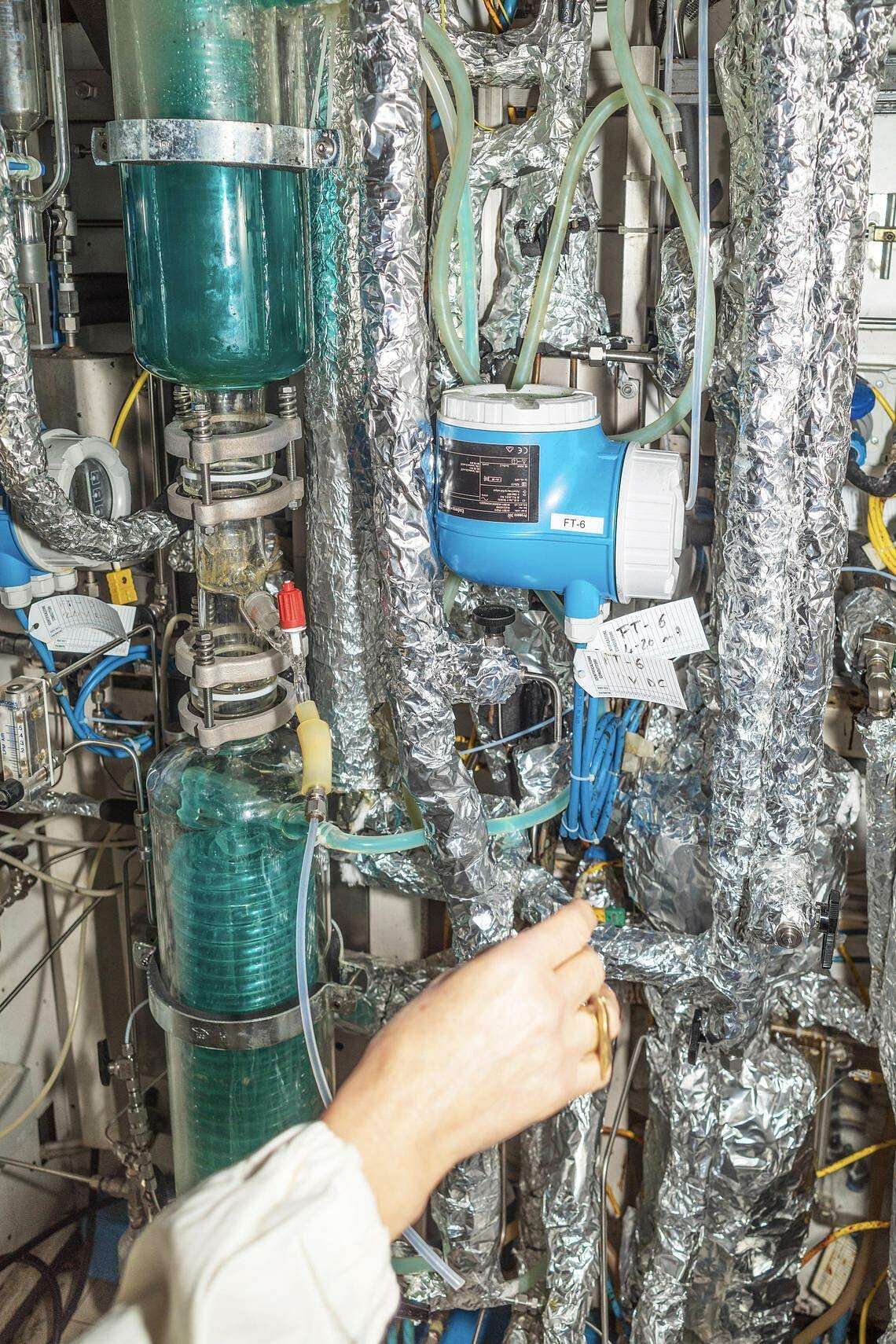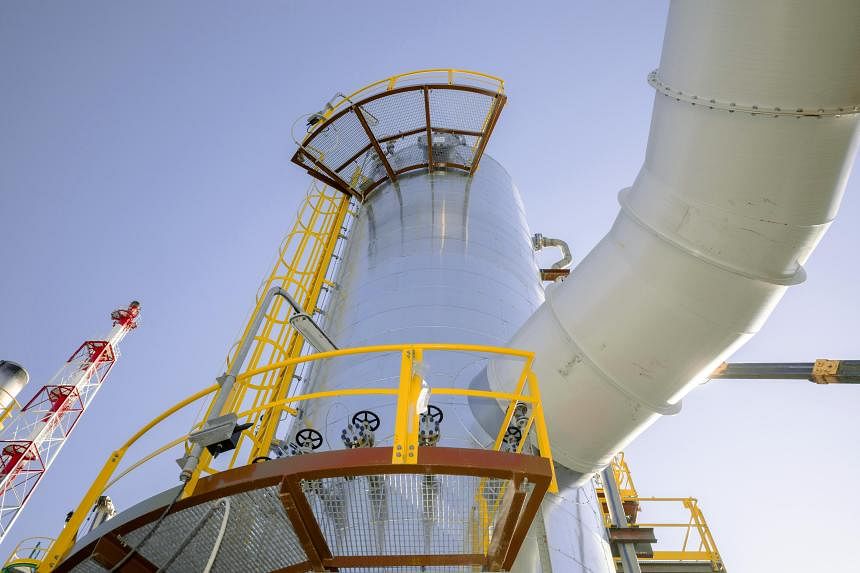RAVENNA (Italy) – Renowned for ancient churches and the tomb of 14th-century poet Dante, the city of Ravenna and its environs along Italy’s Adriatic coast are also home to old-line industries like steel and fertiliser.
The manufacturing plants are of little interest to the many tourists who help sustain the area’s economy, but these sites employ tens of thousands of people.
The question is: For how long? The factories, like others in Europe, face increasing pressure from regulators to reduce the climate-altering gases that their operations produce. The worry is that rising costs from regulation will force them to close.
“We are very scared about the future of our industries,” said Mr Michele De Pascale, the mayor of Ravenna. “We have to reach this goal to reduce CO2 emissions, but we want to do it without destroying our industries.”
Italy’s energy giant, Eni, which has a large presence in Ravenna, is pushing a plan that the mayor says could help preserve the region’s heavy industries: create an industrial pollution collector.
The company is proposing to construct a network of pipelines to sweep up the carbon dioxide from the sites and store it away in old natural gas reservoirs. It sees this process, known as carbon capture and storage, as a promising new business line that would aid its shift to cleaner activities.
Eni is working on similar plans elsewhere in Europe, notably in Britain, where many mature oil and gas fields offer large volumes of storage potential. There are other carbon capture projects around the world, including in the United States, often aimed at reducing emissions from oil and natural gas production.
The company wants to diversify away from the oil and gas sales that have long been its mainstay, but it faces an uncertain future because of climate change concerns. Eni executives calculate they will have an edge because they can make use of the company’s existing infrastructure like wells and pipelines and redeploy employees.
“It is very easy to reskill or shift people,” said Mr Claudio Descalzi, Eni’s CEO.
Mr Descalzi plans to turn carbon capture into a “satellite” company that could attract other investors seeking profits that he forecasts could be about 10 per cent a year.
The transition to cleaner energy will succeed only if it spawns sustainable businesses, Mr Descalzi said. “Otherwise, it will fail,” he added. “Because resources are limited and you can’t burn money.”
Eni has about 50 operating petroleum platforms in the Adriatic Sea off Ravenna, beyond lagoons dotted with flamingos. With production falling, Eni plans to pump carbon dioxide into the depleted gas reservoirs, which will act as giant sponges for the waste gas.
The company is spending about €100 million (S$146 million) on modifications designed to remove about half the carbon dioxide emanating from a gas processing plant in nearby Casalborsetti. Work is largely complete, and Eni plans to begin sending the carbon dioxide through a new well into a gas field about 19km offshore and 3,048m below the seabed soon.
If this first phase goes smoothly, Eni will move to a much larger plan, initially costing as much as €1.5 billion, that will hook up factories and other large polluters in Italy and perhaps even France, to eventually draw as much as 16 million tonnes of carbon dioxide a year for burial.
Just as oil experts use powerful computers to crunch data into 3D images to figure out how to efficiently extract gas from the ground, they are now using similar techniques to model how to safely inject carbon dioxide into porous rock.
Launching carbon capture projects, though, is proving a grind – an indication of how challenging the energy transition may be as countries shift from some of the easier areas to clean up, like electric power, to more difficult sectors such as cement and steel.
Carbon capture needs to account for 8 per cent of cumulative emissions reductions if the world is to achieve net-zero by 2050, according to the International Energy Agency, an intergovernmental organisation. Yet to be on track, the volume of stored carbon dioxide needs to jump twentyfold by 2030, to 1 billion tonnes a year – “a very ambitious undertaking”, said Mr Carl Greenfield, an analyst at the agency.
Polluters are struggling to evaluate whether it is worthwhile spending tens or even hundreds of millions to retrofit their plants. “They don’t have even the expertise to understand which is the best technology,” said Mr Guido Brusco, Eni’s chief operating officer of natural resources.
But pressure from customers and taxes on carbon are pushing businesses to look seriously at carbon capture projects. Some analysts forecast that the European Union’s carbon tax will soar well above €100 a metric tonne in future years, making proposals like Eni’s, which Mr Brusco says will cost less than €80 a metric tonne on average, an easier sell.

Mr Andrea Ramonda, CEO of Herambiente, which burns municipal waste to produce energy, is weighing the pros and cons. He figures that building what he calls a “washing machine of gases” at the plant could mean roughly doubling the €110 per metric tonne that it now costs customers to burn their garbage.
“We have to be very prudent” when managing the money of citizens, he said.
High costs and other obstacles mean that these proposals tend to require government backing, at least in the early stages.
“At the end of the day, you have to have some sort of government support,” said Dr Bassam Fattouh, director of the Oxford Institute for Energy Studies, a research organisation. “Otherwise, many of these projects will not be realised.”
The British government has for years backed work by Eni, including a plan to clean up emissions around Liverpool and Manchester in north-west England. As part of the project, known as HyNet North West, Eni would build and manage a 64km pipeline for collecting carbon dioxide from factories and other polluters in the area and pump the gas into wells beneath Liverpool Bay. Eni says it has reached a preliminary agreement with the British government to receive a guaranteed profit.

“We’re backing this industry with £20 billion (S$34 billion),” Mr Martin Callanan, Britain’s minister for energy efficiency and green finance, said in an e-mailed statement.
Negotiations with the Italian government are less advanced, although Eni executives hope Italy will copy Britain’s approach. Ms Vannia Gava, Italy’s deputy energy minister, recently visited the Ravenna project and said afterwards, “This is an enormous opportunity for Italy.”
Eni and other operators of carbon capture systems are targeting large emitters such as cement and fertiliser plants that analysts say lack options to clean up their operations.
Heidelberg Materials, for instance, operates a large cement plant at Padeswood in Wales that it wants to tie into the Hynet pipeline. Mr Simon Willis, CEO of the company’s British business, said about 60 per cent of the plant’s substantial emissions came from a chemical reaction in the cement-making process.
“There is nothing we can do about that other than collect it and store it,” he said.
Even some environmental groups are inclined to give carbon capture at least a lukewarm pass as long as it is not a means of prolonging the use of fossil fuels.
“If CO2 release to the atmosphere is otherwise inevitable from an industrial installation, then it is better to capture it,” said Mr Doug Parr, chief scientist of Greenpeace UK. NYTIMES

